Hoops Mailbag: The Poolebag

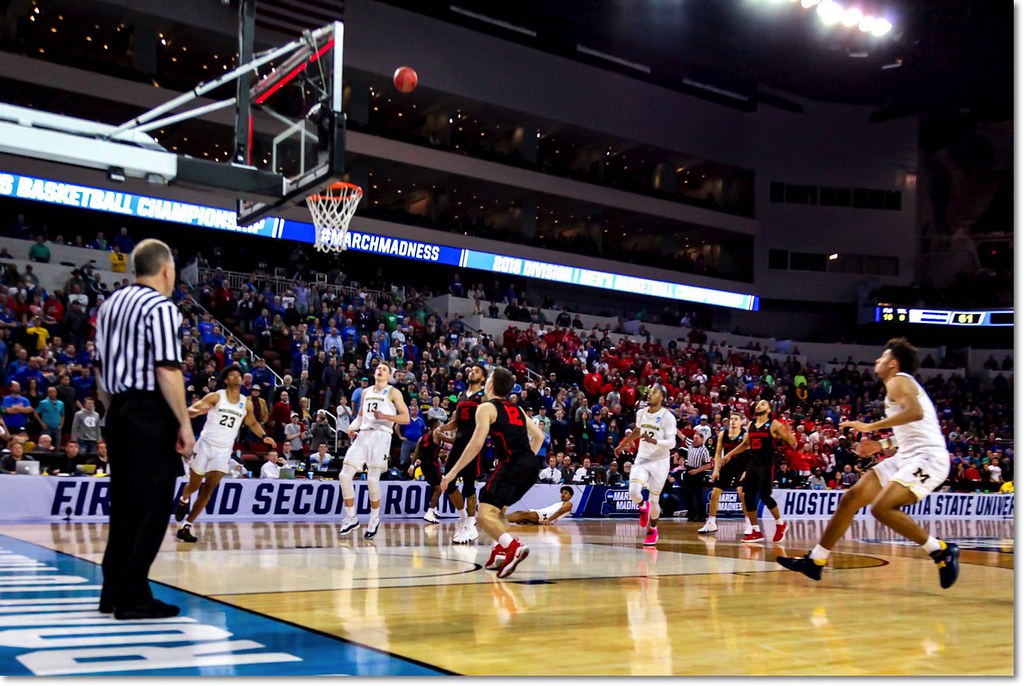
Yes, this still somehow went in. [JD Scott]
Another tournament week, another multi-part mailbag. This one contains the questions about/inspired by Jordan Poole's buzzer-beater. Yes, I'm as shocked as you are that I sorted them this way. Jump in!
A Free Pass
Hey Ace - Are there any statistics showing whether teams should guard the inbounder in late game situations like against Houston? On the surface, it seems like a huge mistake to let Livers inbound the ball to halfcourt so easily.
-Pat
While I don't remember seeing such a study and can't find stats on it, I agree that Kelvin Sampson erred in allowing Isaiah Livers to get a clean look on the final play. An opposing staff can only scout so many games, but I'm guessing Houston's coaches didn't get to the Maryland tape.
Even though the outcome of the plays were wildly different, Michigan's game-winners against the Terps and Cougars came on nearly identical setups: Livers hitting Muhammad-Ali Abdur-Rahkman with a baseball pass from his own baseline out of a timeout. Neither opponent elected to guard the inbounder even though Livers wasn't allowed to run the baseline.
Maryland's Mark Turgeon explicitly tried to set up his defense to prevent anyone from catching a pass while running towards the Terps basket. Here's how that went:

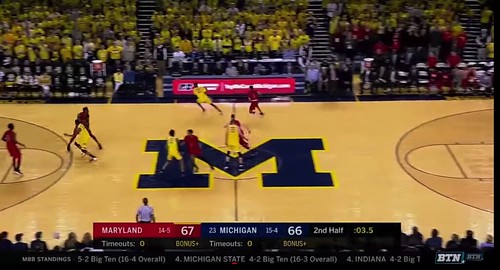
If you forgot, MAAR nearly got all the way to the hoop, drew a foul, and drained both free throws with the ruthless calm of a serial killer.
Here was Houston's setup:
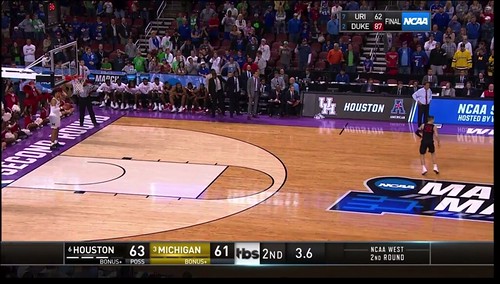
While the Cougars were more successful in preventing a long pass to a guy on a dead run, they still allowed MAAR to catch the ball a fair distance up the court without any immediate pressure, which let him get upcourt in a hurry even though they had two defenders waiting.
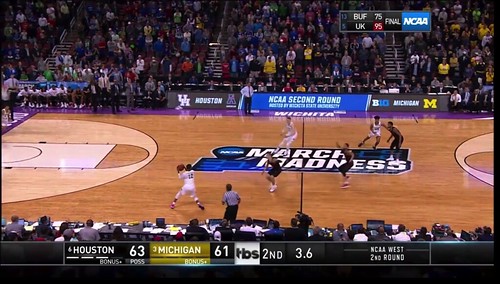
Houston forced a tough shot, but it was still a catch-and-shoot look from a not-entirely-unreasonable distance by a shooter who had the time and space to square up to the basket. That's not a prayer, at least if you're Jordan Poole; ideally, the defense is forcing teams into prayers in that situation.
I don't think having the extra defender back is worth whatever added coverage it provides. Again, Livers can't run the baseline in either of these cases, and he's being asked to throw accurate passes far downcourt. Stick a big man on him and that becomes a great deal more difficult to execute. A tougher pass for Livers means either MAAR has to run farther back to the ball—losing precious time and momentum—or risk never completing the pass at all on a deeper attempt. Beilein's now gushed twice this season about Livers being able to throw pinpoint baseball passes; that's a lot harder to do with a basketball when you're not getting the same amount of space as an actual baseball pitcher.
Recency and confirmation biases may be playing a factor, but I rarely find the fifth defender that stays back even comes into play that often. For the offense, the downside of having the entire court to cover can also be an upside—your players can sprint full-out, which never happens for more than a couple steps in a halfcourt situation. Even with the extra man back, it's hard to keep a team from hitting the player they want—usually after running him through a couple screens—and that can lead, as in Maryland's case, to getting a bunch of players uselessly stuck behind the play while a fast man runs past them.
Houston more productively spent their extra player on MAAR and he still had an easy pass to make because of the amount of space he had on the catch. They did a much better job on the back end than Maryland by preventing MAAR from either driving or pulling up. They still got burned. I thought everyone learned this lesson in 1992: guard the dang inbounder.
Or don't, actually. Coaches not doing that is working out pretty nicely for my life.
[Hit THE JUMP for my top-five last-shot-makers of the Beilein era, an evil question that was also the most popular, and MAAR's overlooked move.]
Top Five All Time Cold-Blooded Killers
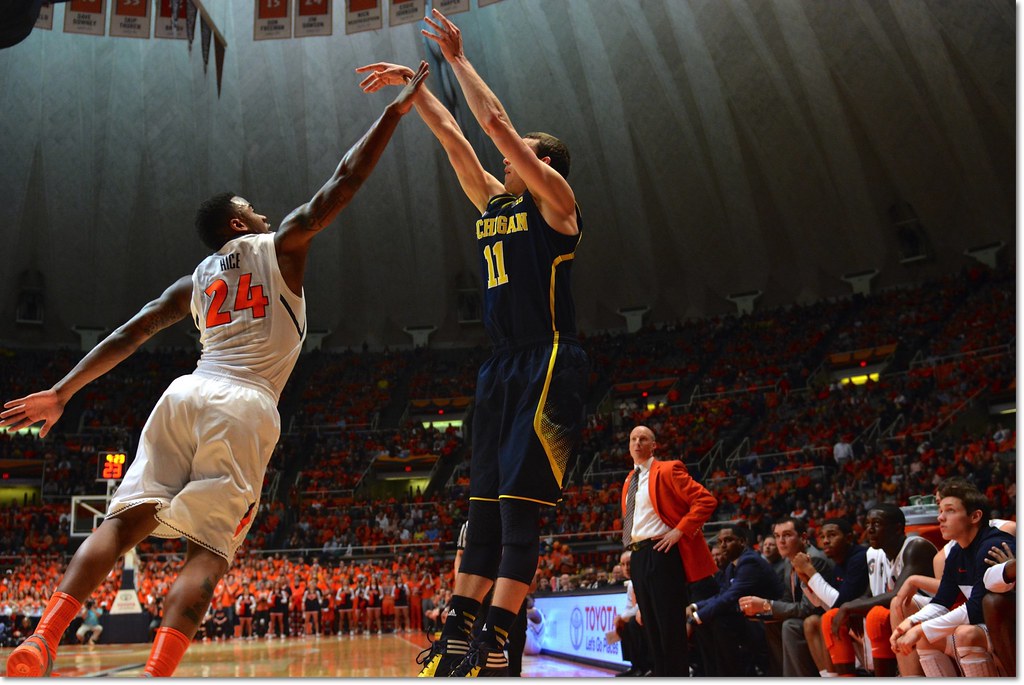
The Orange Krush remembers. [Bryan Fuller]
In the Beilein era, who are your top 5 guys you want taking the buzzer beating game winner? #mgomailbag #swagoverdose
— Austin (@Lofter4) March 20, 2018
5. Stu Douglass. It feels appropriate that the only video of Stu's last-minute three to ice the 2011 victory at Michigan State is a grainy, shaky, filmed-my-TV-with-a-camcorder YouTube uploaded a couple weeks after the shot. There have been so many huge plays since that this one often gets lost in the shuffle even though it's hard to overstate its importance. Michigan was coming off the extremely disappointing 2009-10 season and entered the Breslin Center at 1-6 in Big Ten play; the shot propelled them to an 8-3 finish in the conference and a spot in the tournament. I don't know how Beilein's tenure plays out if that shot doesn't fall; I'm glad I didn't have to find out.
4. Glenn Robinson III. There's more than one way to be an option at the buzzer. GRIII may not have been much of a shot creator or outside shooter in college, but he was a superlative athlete with great hands and touch around the basket. The actual buzzer-beater against Purdue obviously jumps to mind. That's not the totality of GRIII's clutch resumé. The Shot never occurs if GRIII doesn't come up with a loose ball and cooly hit a reverse layup 30 seconds earlier against Kansas in 2013. After Indiana erased a late 11-point Michigan lead, he drilled the go-ahead corner three to sew up an outright Big Ten title in 2014.
He wasn't the guy you asked to run an iso on the final possession, but if the play ended with the ball in his hands, the play usually ended well. The baseline cutter is often the forgotten man in late-game situations as teams overplay the star shooter; GRIII played that role beautifully.
3. Trey Burke. I certainly don't need to explain his inclusion. Burke hit The Shot, then proceeded to hit more insane shots in the overtime period to ensure it wouldn't go down like Chauncey Billups' half-courter against the Nets. Yes, we had issues with Trey Burke heroball before that—there really was a time that was a problem—but, well, that made up for a whole hell of a lot, especially given Burke's considerable other clutch contributions.
2. Jordan Poole. You're damn right he's already this high. Poole's shooting 100% on potential game-winners, including a 100% mark in NCAA Tournament games. QED.
Seriously, though, Poole is already a tremendous three-point shooter with a knack for making the exact shot that sent Houston home. He's also got a strong off-the-dribble game and zero fear of the moment. I don't think we've seen his last game-winner.
1. Nik Stauskas. Stauskas just ruined lives, man. This is my favorite because of the combination of crossover, stepback, defender (Nigel Hayes), opponent (Wisconsin), location (the Trohl Center), and absolute cold-bloodedness:
Pretty much any shot he hit at the Breslin Center that year would be a suitable final play, too. The only reason Stauskas didn't have a buzzer-beater to his name at Michigan is because he put opponents out of their misery too quickly. Just ask Illinois.
Honorable mention: Derrick Walton is actually in my top five (slide him above GRIII) but this question begged for a section on Stu's shot and GRIII's different style of clutch is underrated. Caris LeVert may have been the best option of all these guys but was too injured in college to show it. Kam Chatman but only when Walton thinks he's Aubrey Dawkins.
Not Cool, Guys

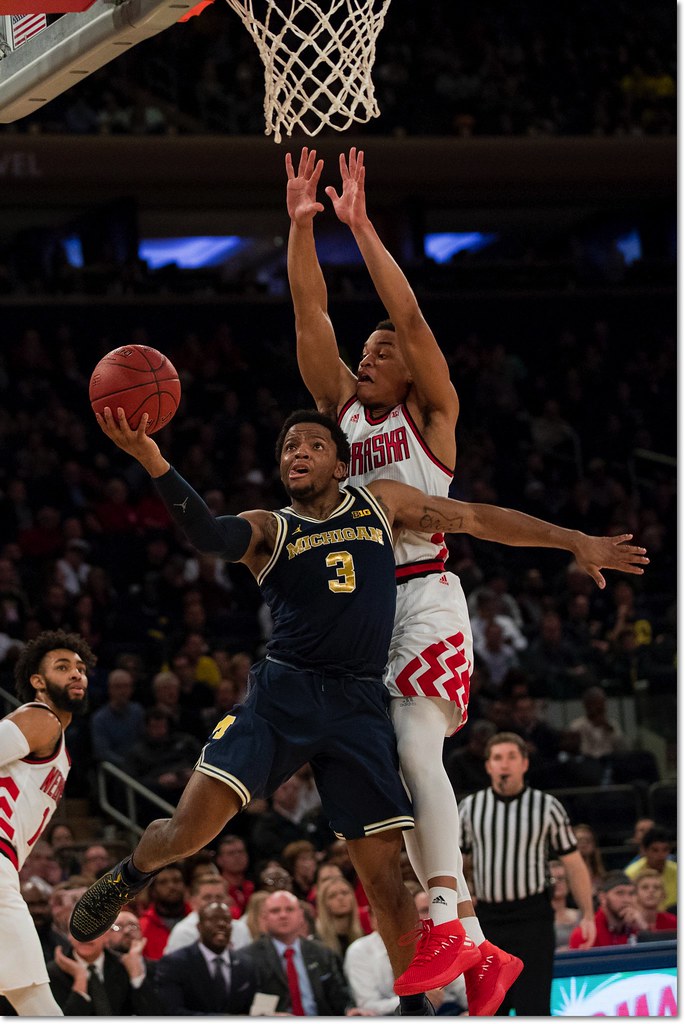
Don't make me choose. [Marc-Gregor Campredon]
Three people independently came up with this question and multiple others chimed in either to say I should answer it or to provide one of their own:
Philosophical question: would you trade Jordan Poole’s buzzer beater for DWalt’s shot against Oregon?
— Colin O'Brien (@colinjobrien) March 20, 2018
Choose and death not an option: Would you give up Poole’s made shot for Walton’s miss against Oregon last season to go in? Please provide work with your answer
— MichiganManMMQ (@MichiganManMMQ) March 21, 2018
If you had the option to switch out Poole's buzzer beater for a near miss from tournaments past (Darius vs Duke, Walton last year, etc.) would you? So Michigan would be home this weekend, but another team gets to live on.
— Michael Harary (@MikeH1123) March 20, 2018
You sadists.
Let's get Darius Morris against Duke out right away. As great as the win would've been,—and trust me, I don't underestimate the greatness of any tourney upset of Duke—that Michigan team didn't have a potential dark horse title run in them. Last year's team did. This year's team does.
My initial inclination was to go with Walton, a senior whose shot would've sent Michigan to the Elite Eight. That team was playing beautiful basketball and I wasn't ready to see it end. They had a chance to go all the way.
The more I thought about it, though, the more I leaned in the other direction. Michigan still would've had to go through Kansas (in Kansas City), North Carolina, and Gonzaga to win the championship last year; I don't think last year's defense holds up through that gauntlet given what happened in the Oregon game.
This year's team, though, is playing defense at such an elite level that they made it through the first weekend without breaking a point per possession in either game. They have the ability to play much better on offense, albeit not quite at the level of last year's squad. Three things swing it for me:
- The Path. As you probably well know by now, Michigan is the best seed left on their entire half of the bracket and could get a remarkably clear path with a couple more upsets; getting to the title game while playing a team no better than a seven-seed is on the table, albeit unlikely. No matter what, it'd be an easier path than a hypothetical 2017 run.
- Jordan Poole. I'm completely in the bag for Jordan Poole.
- The End. If that Oregon shot goes in it really ruins the analogy and the kicker of the best thing I've ever written.
Your mileage may vary on how heavily you weigh those last two.
You sadists.
We Need To Be Less Literal
well sure I'll use the excuse to post this
What do we name Poole’s shot? Have seen some back and forth about referring to it as The Shot but many people refer to Burke’s shot as The Shot. #mgomailbag
— TomL2709 (@L2709Tom) March 20, 2018
The First of Many.
I'd suggest "Poole's Prayer" but at absolutely no point did he ever doubt that was going in.
Going Ham
[sideline reporter voice] Talk to me about the MAAR ball fake that preceded The Shot (Pt. 2).
We really need to work on the name, but first go ahead and watch that video again as many times as you please.
[waits]
[checks watch]
[grabs breakfast]
Alright, you're back. An underrated bit of this play is the setup by MAAR. As John Beilein said after the game, Poole was not option one.
"I put great shooters out there in the event that we couldn't get to the rim we could win the game," said Beilein. "So in 3.4 seconds, I think it was 3.1, if you catch the ball at half court you can get right to the rim. But they double teamed [MAAR]. And that's when he found Jordan."
MAAR didn't just find Poole. His initial dribbles after the catch are strong dribbles to the middle of the court even though that's the strength of the defense. That forces the double-team to commit. When MAAR brings the ball up to pass, it isn't initially obvious where he's going, especially if you look at the play from the defense's perspective—three players overload the play side while Livers is charging up the far side, and even if he's an unrealistic option that's enough to keep Houston from shifting over to match up with the players already in the frontcourt:
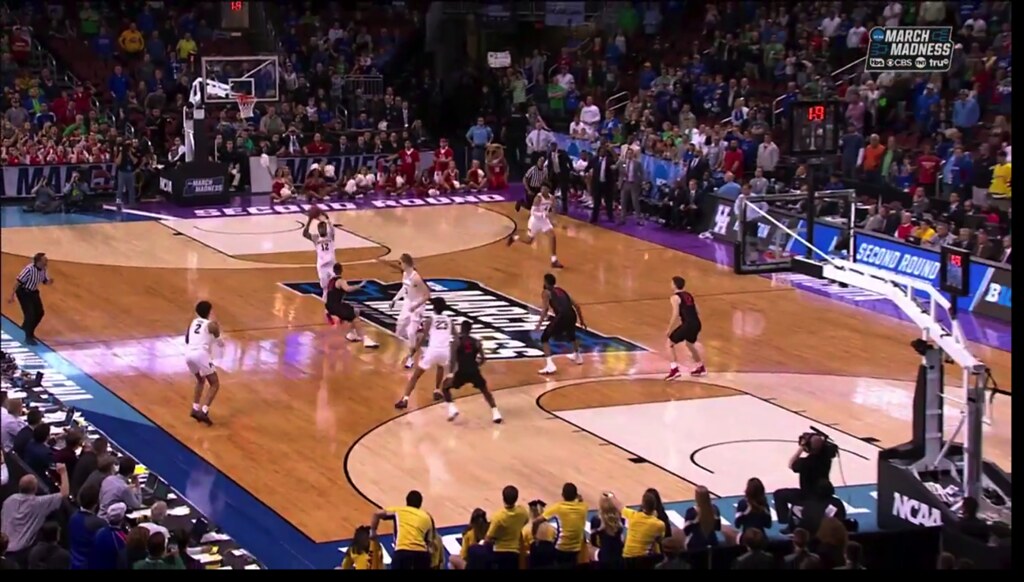
if you’re going to guard the inbounder anyway maybe do it from the start?
Corey Davis (#5, closest man to Ibi Watson) is in a tougher spot than it appeared live. He can't abandon Watson too early and risk allowing a game-tying layup. Moe Wagner is a very dangerous shooter who's also running into his general area. Poole is way the heck out there. MAAR's ball fake freezes Davis for that split-second Poole needed to square and fire; it also nearly caused Davis to commit a shooting foul because of his late, hard closeout. The little things can make all the difference.
March 21st, 2018 at 11:24 AM ^
I've got Poole's shot as the CANNONBALL
The highlight of any Poole Party and lethal to boot.
March 21st, 2018 at 11:46 AM ^
should just be:
"Houston, you have a problem"
March 21st, 2018 at 11:56 AM ^
Poole's Poniard
(poinard: a dagger with a slender blade of triangular or square cross section - definitely 3-sided in this case)
March 21st, 2018 at 11:58 AM ^
I feel good about our chances vs A&M this weekend, but man oh man do I wish we had a pull up shooter like Stauskas this year. Went down the rabbit hole of his highlights and he just made shots.
March 21st, 2018 at 12:01 PM ^
I will take Darius vs. Duke for entirley selfish reasons. Michigan was in the West that year and I had sweet 16 and elite 8 tickets in Anaheim.
Counter point- Michigan is in the West again this year and I was able to buy tickets to the sweet 16 on Stub-hub.
Back then though, Michigan just making the tournament was a big deal and their was still this sense of uphoria about the turnaround from the Amaker era. To see that team live at that time in the sweet 16 would have been something. Hopefully they don't disapoint tomorrow!
March 21st, 2018 at 12:13 PM ^
Also, can we instead have Aaron Harrison's shot not go in? I love to think about how back to back final 4's might have changed recruiting for Beilien
I understand where you're going with that. Unfortunately, I don't think it works quite that way in college bball. I don't know if it was an mlive podcast or article, but Brendan Quinn and Nick Baumgarder talked about Beilein not being able to bring in the "top" recruits. Ultimately, they said it boiled down to due to the fact that Beilein isn't willing to pay for them, he realistically has a chance at one or two five-stars a year. Do I think he should have done better coming off those two really good years, absolutely. But I don't think we're going to see many of the best coming to Ann Arbor to be a one/two-and-done when the offensive system is so intricate. I think the system of Calipari et al. sending out the five most athletic and saying "go play" appeals more to those players.
March 21st, 2018 at 12:17 PM ^
Poole's Big Splash.
The Break
Comments